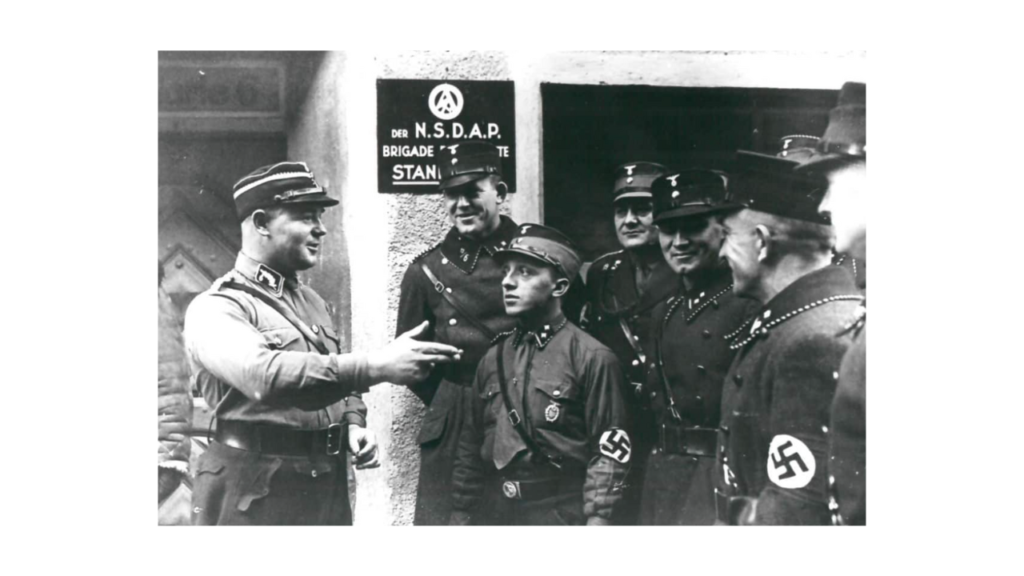The Night of the Long Knives: Consolidating Power in Nazi Germany
For Reference: Nazi Germany | Part 2
As the Nazi Party solidified its grip on Germany in the early 1930s, internal and external threats loomed large over Adolf Hitler’s ambitions. One of the key moments in the early history of Nazi Germany was the Night of the Long Knives—a purge that took place in June and July 1934. This event not only eliminated key political rivals but also consolidated Hitler’s authority, securing his hold over the Nazi Party and the nation. This article delves into the reasons behind the purge, the events that transpired, and its far-reaching consequences.
Setting the Stage: Tensions Within the Nazi Party
By 1934, Hitler had become Chancellor of Germany, but his position was not yet secure. One of the most significant challenges to his power came from within his own party—the Sturmabteilung (SA), or Storm Troopers, led by Ernst Röhm. The SA had played a crucial role in the Nazi rise to power, engaging in street battles with communists and intimidating political opponents. However, Röhm’s growing power and the SA’s radical demands for a “second revolution” increasingly clashed with Hitler’s desire to maintain the support of conservative elites, the military, and industrialists.
Röhm envisioned the SA replacing the traditional German army and leading a socialist-leaning revolution within the Nazi movement, but this threatened the old guard of the German military, the Reichswehr, as well as Hitler’s carefully cultivated relationship with conservative factions. To secure his leadership, Hitler had to act.
External Pressure: The Role of the Army and Conservative Elites
In 1934, the German army, the Reichswehr, was still a formidable institution, and Hitler needed its support to fully consolidate his power. Military leaders were wary of the SA’s growing influence and resented Röhm’s calls for a more revolutionary agenda. At the same time, conservative political figures such as Franz von Papen expressed concerns about the SA’s increasing power and the instability it posed to the German state.
Hitler, aware of these tensions, realized that to gain the army’s allegiance and secure his dictatorship, Röhm and the SA’s radical elements had to be removed. It was through this lens that the events of the Night of the Long Knives would unfold.

Image: The Wiener Holocaust Library Collections.
The Night of the Long Knives: The Purge Begins
On June 30, 1934, Hitler, along with Heinrich Himmler and Hermann Göring, initiated the purge. Over the course of several days, SA leaders, along with other political opponents, were arrested and executed. Ernst Röhm was a primary target; he was arrested and later shot after refusing to commit suicide. Other prominent figures, including Gregor Strasser, a former Nazi leader who had fallen out with Hitler, and Kurt von Schleicher, a former Chancellor of Germany, were also killed.
The purge extended beyond just the SA. It was an opportunity for Hitler to eliminate anyone who posed a threat to his leadership, whether inside or outside the Nazi Party. The exact number of people killed during the Night of the Long Knives is still debated, but estimates range from 85 to several hundred.
Consolidating Power: The Aftermath
The immediate result of the Night of the Long Knives was the destruction of the SA’s influence. After Röhm’s death, the SA was reduced to a secondary force, with the more disciplined Schutzstaffel (SS), led by Heinrich Himmler, taking on the role of enforcing Nazi policies and internal security.
The purge also solidified Hitler’s control over the German military. In August 1934, after the death of President Paul von Hindenburg, the army took an oath of personal loyalty to Hitler, rather than to the state. This oath effectively placed the military under Hitler’s direct command, further ensuring his dictatorial power.
Moreover, the Night of the Long Knives sent a clear message to potential rivals and dissenters: opposition to Hitler would not be tolerated. The swift and brutal nature of the purge demonstrated the lengths to which Hitler was willing to go to eliminate any threats to his rule.
Public Perception and Legitimization of the Purge
One of the most chilling aspects of the Night of the Long Knives was how it was publicly justified. Nazi propaganda, orchestrated by Joseph Goebbels, portrayed the purge as a necessary action to protect the country from a coup led by Röhm and the SA. In a public speech on July 13, 1934, Hitler took full responsibility for the killings, framing his actions as essential for the survival of Germany. The public, already swayed by Nazi propaganda, largely accepted this narrative.
The purge was also formally legalized. The Reichstag passed a law retroactively legalizing the killings, providing a veneer of legitimacy to the extrajudicial executions. This marked a turning point in Nazi Germany’s descent into totalitarianism, where the rule of law was subverted in favor of Hitler’s absolute power.
The Night of the Long Knives was a pivotal moment in the consolidation of power in Nazi Germany. It allowed Hitler to eliminate both internal and external threats, secure the loyalty of the German military, and further tighten his grip on the country. The event demonstrated the ruthless lengths to which Hitler was prepared to go in order to protect his regime and foreshadowed the violence and oppression that would define Nazi rule in the years to come.
In the next article, we will explore the consequences of Hitler’s consolidation of power and the impact of his totalitarian regime on German society, focusing on the early years of Nazi governance and the implementation of policies that set the stage for World War II.
Details of the Featured Image
Central Press/Getty Images (Representative Image)
Author
Ziara Walter Akari
© www.apotheosislife.com
